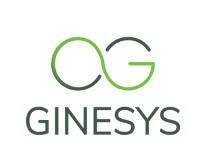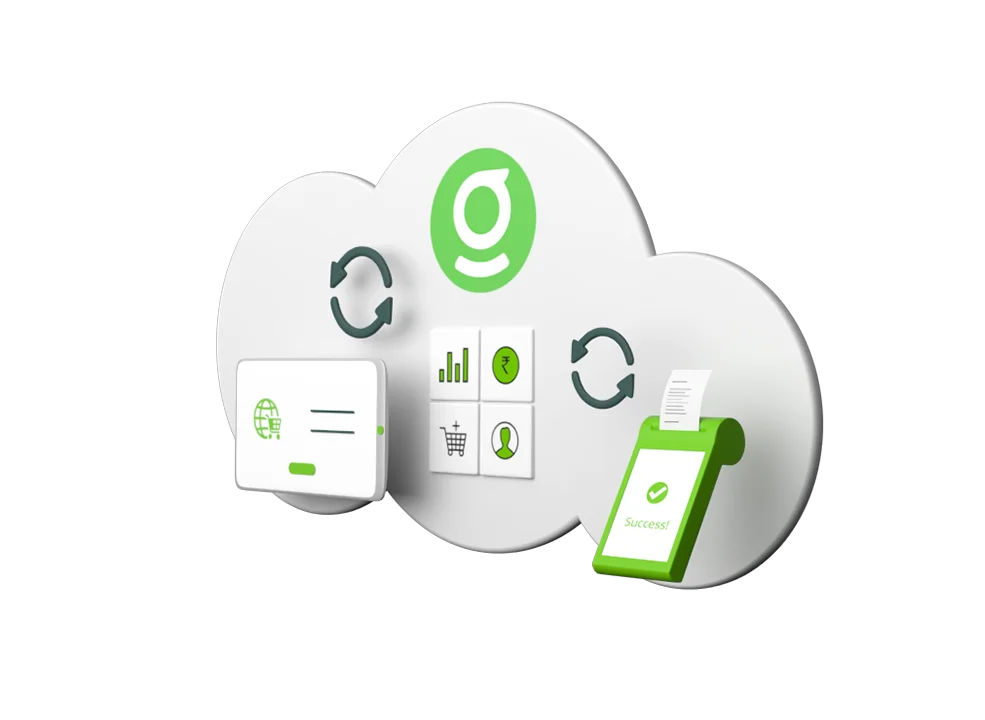Why Integration Matters: Connecting ERP with Other Retail Software
Are you a retail business owner juggling between multiple systems operating in isolation? Point-of-Sale (POS) systems, inventory management, e-commerce platforms, and accounting software–each system is crucial with loads of valuable data and insights.
In fact, according to a recent study, on average companies use 976 applications, but only 28% of them are integrated. Retailers manually update records, constantly deal with errors and inefficiencies, and shuffle between systems for actionable data.
This can result in inefficient systems, data silos, and missed opportunities. Companies waste a lot of time correcting errors, they may lose revenue and also find it difficult to scale. So, what if your sales, inventory, and financial reports could sync in real-time?
This can be achieved by integrating the retail ERP with other retail software. This blog will explain why this integration is important, what it achieves for retail businesses, and how Ginesys makes it possible. Let’s get started.

Break Data Silos, Boost Retail Efficiency!
The Hidden Cost of Disconnected Systems
While manual updates, dealing with inaccuracies, or losing out on efficiency might seem like small inconveniences, the hidden cost of disconnected systems is huge. It leads to a wastage of resources and dilutes profitability.
Hypothetically, consider the situation where a customer purchases a dress from a store but later finds the same dress at a 30% discounted price on an online store. This will lead to the customer feeling cheated, resulting in the customer never returning to you for future purchases.
Similarly, there are many disadvantages for retailers running on isolated systems. Here are some of the hidden challenges of disconnected systems:
1. Manual Data Entry: More Errors and Lost Time
When your retail systems are not integrated, employees have to manually feed the same data multiple times into multiple systems. This takes a huge amount of time and also increases the chances of errors–wrong prices, inaccurate stock levels, or missed orders. All of these mistakes cumulatively affect sales, profitability, and customer satisfaction.
2. Inventory Mismanagement: Overselling or Stockouts
Say, a customer places an online order, and the system shows the item as “in stock”, whereas it’s already sold out in your physical store. Now, the retailer must cancel the order and process a refund. Above all, the customer is unhappy, and their trust is slowly eroding.
Sales and inventory data should be updated in real time for smooth operations. Otherwise, it might lead to overselling or overstocking, either way leading to customer dissatisfaction.
3. Scattered Customer Data: Missed Marketing Opportunity
Retailers collect data about consumers from different touch points like websites, social media, online stores, and in-store purchases. This information helps them personalize their marketing efforts which creates a loyal customer base.
Without centralizing customer data, retail marketers do not have an overall view of customer preferences and needs. So, they miss out on their opportunity to target individual customer segments, upsell, or cross-sell. As a result, customer engagement is reduced, leading to a loss of repeat sales and customer loyalty.
The bottom line?
Disconnected systems are not just an inconvenience–they cost the business profits, efficiency, and customer satisfaction. A fully integrated retail ecosystem is the ultimate solution to keeping your operations smooth and profitable.
ERP + POS: The Foundation of Smooth Transactions
Enterprise Resource Planning (ERP) and Point-of-Sale (POS) are two significant systems for a retail business. POS handles real-time sales transactions, while ERP handles inventory, finance, accounting, purchase, and reporting.
There is a lot of data overlap between these two systems. When these systems are disconnected, a sale that is made and recorded in the POS system has to be manually updated in the inventory system. There are high chances of manual errors leading to costly repercussions like overselling or stockouts.
When the POS and ERP for retail stores are integrated, every transaction made at the POS is automatically reflected in the appropriate ERP systems. For example:
- Sales transactions are automatically updated in the inventory system
- Promotions and pricing are maintained consistently across channels
- Financial data is automatically updated in the accounting system
- A Holistic view of customer data leads to implementing better marketing campaigns
- Accurate sales and inventory data leads to accurate demand forecasting
Integrating the retail ERP and POS systems helps reduce discrepancies, improve customer experience, and scale up or down easily.

Unify. Streamline. Scale: Discover the Power of Retail Integration with Ginesys
Ecommerce and ERP: Keeping Online and Offline Sales Aligned
Omnichannel marketing is becoming the order of the day, and so retailers must keep their online and offline systems aligned. Two systems that help keep track of online and offline channels are the Ecommerce and ERP systems.
While the Ecommerce system handles the front-end online store operations like product catalog management, customer management, order processing, etc., the ERP handles the back-end operations like inventory, supply chain, finance, production, warehousing, etc.
Isolated ERP and Ecommerce systems mean more work, more errors, and more dissatisfied customers. For instance, when a limited-time discount offer is run online but is not applied in-store, it causes confusion and unhappy customers.
An integrated Ecommerce and ERP system will help in:
- Real-time Inventory Management: When a product is sold, stock levels are updated in real-time across all channels, avoiding overselling and stockouts.
- Faster, Error-free Order Processing: Orders taken online will be automatically moved to shipping and order fulfillment, reducing delays, errors, and manual work.
- Consistent Pricing and Promotions: Across online and offline stores, customers will see the same prices, offers, and promotions, resulting in satisfied customers.
Today’s retail customers expect speed, accuracy, and convenience above all, and an integrated retail ERP system delivers just that.
Inventory Management: Preventing Overstock and Lost Sales
Inventory has to be updated when there is a sale, stock purchase, or transfer of goods between different stores. When inventory is disconnected from the other retail systems, data does not sync automatically, which might lead to issues like overstocking, wasted storage costs, or stockouts.
Integration helps retailers make sure that the right product is available at the right time. You can:
- Track stock levels in real-time across multiple stores and warehouses.
- Accurately forecast demand with AI analytics and optimize purchase decisions.
- Automatically reorder by setting up reorder points to avoid under or over-stocking.
Integrated inventory management and ERP for retail helps them take control of stocks, improve efficiency, and increase profitability.
Finance and Compliance: Reducing Errors and Ensuring Accuracy
Retail finance is not just tracking sales–it’s about knowing where your money is, how much you owe, and whether you follow the rules. But when financial data is spread across various platforms, there are high chances of duplicate entries, missed tax filings, cash flow confusion, or even penalties.
This is where integrated finance makes all the difference. With everything connected, you can:
- Automate Financial Tracking: The ERP automatically records every transaction–sales and expenses–in real time, keeping your accounts accurate and up-to-date.
- Streamline Cash Flow Management: Real-time financial data helps retailers monitor profits and expenses and make informed financial decisions.
- Ease Tax Compliance: Automated tax calculations, accurate invoicing, and built-in compliance tools help avoid costly penalties and maintain compliance.
- Reduce Audit Risks: Automated reporting helps retailers produce accurate financial statements, making audits smooth and stress-free.
At the end of the day, integrating finances with ERP is not just about reducing errors–it’s about taking full control of your company’s finances without the manual grind.

Unify Your Retail Systems, Unlock Seamless Growth!
Connected Systems Matter
According to McKinsey research, the average retail consumer uses at least three channels for each purchase. While 75% of consumers expect a perfect omnichannel experience, only 25% are satisfied with what the retailers provide.
What is the reason for this gap? Isolated retail systems.
There is a high chance that retailers face challenges, such as pricing mismatches, stock discrepancies, and delayed orders, leading to unhappy customers.
An integrated ERP and retail system helps in:
- Offering customers a smooth omnichannel experience
- Making smarter, data-oriented decisions
- Automating processes to improve efficiency and profitability
How Ginesys Ensures Effortless ERP Integration
When small and medium retailers want to grow their business, they are often faced with operational challenges–delayed inventory updates, inconsistent pricing, financial blindspots, etc. Ginesys eliminates these challenges with real-time integrations, ensuring that all retail systems are in sync with each other.
1. Real-Time Data Flow
Ginesys solutions help update the data in real time across systems like POS, ecommerce, finance, and inventory systems. This makes sure that:
- Inventory is always accurate whether sold online, in-store, or through a marketplace.
- Sales and Purchase data is instantly reflected in financial reports, improving cash flow visibility.
- Taxes are always posted correctly to the GST Portal and you can get your Input Tax Claims processed without any hassles.
- Retailers get a single dashboard of online sales, offline sales and omnichannel sales instead of juggling between multiple systems.
2. Plug-and-Play Integrations
Traditional ERP integration required extensive coding, complex configurations, and longer deployment times. Ginesys simplifies this with:
- In-built connectors for major eCommerce marketplaces, ecommerce platforms, and other retail tech like loyalty, CRM, smart receipts and more.
- Scalable APIs that allow retailers to integrate new sales channels as they expand.,
3. Scale Without Operational Challenges
As retailers expand to new locations, online marketplaces, and omnichannel strategies, disconnected systems can lead to operational challenges. Ginesys makes sure that is:
- Consistent pricing and promotions across channels, without manual updations.
- Centralized control over retail operations, like sales, inventory, and reporting, especially for businesses operating from many locations.
- Data-backed decision-making offers real-time intelligence into stock management, sales trends, and financial performance.
With Ginesys, ERP integration is more than just connecting retail software systems. It’s about reducing operational challenges and building a future-ready business.

Synchronize, streamline, succeed: Integrate your retail ERP today with Ginesys
Ginesys: Your Path to Smarter Retail Operations
In today’s omnichannel retail environment, disconnected systems are a liability. By integrating your ERP with POS, ecommerce, inventory, and financial systems, companies can reduce inefficiencies and manual errors.
This is where Ginesys comes in. With its plug-and-play ERP integrations, we help omnichannel retailers sell smarter, operate faster, and grow without disruptions.
Are you ready to make your retail business smarter? Get in touch with Ginesys for a demo.

